Zirconia Oxygen Sensor
About Zirconia Oxygen Sensor
This sensor is utilized for the air-fuel ratio control of the exhaust gas.
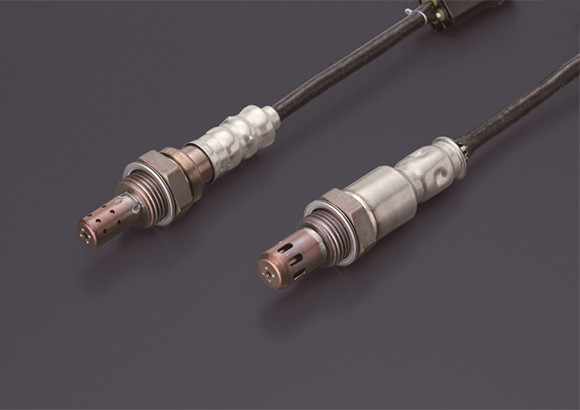
What is oxygen sensor...?
Porous electrodes are placed on two sides of a zirconia ceramic element. When one side is exposed to air and the opposite side to exhaust gas, a voltage is generated in response to the difference in O2 concentration. This property can be used to control the air-fuel ratio.
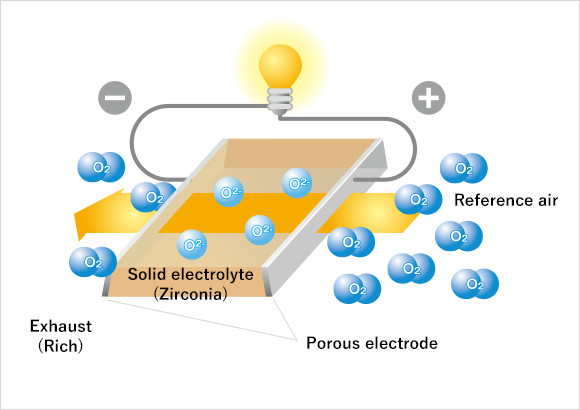
The upper figure below illustrates the behavior of an oxygen sensor in rich conditions (excess fuel, low O2 concentration). At high temperatures, zirconia conducts oxygen ions, a characteristic that allows oxygen ions to flow from the high O2 concentration of air to the low O2 concentration on the exhaust side of the ceramic. Since these ions are negatively charged, an electromotive force is produced between the two electrodes. In lean exhaust (less fuel, high O2 concentration), the difference in O2 concentration between the two electrodes is small, so no electromotive force is generated (right figure).
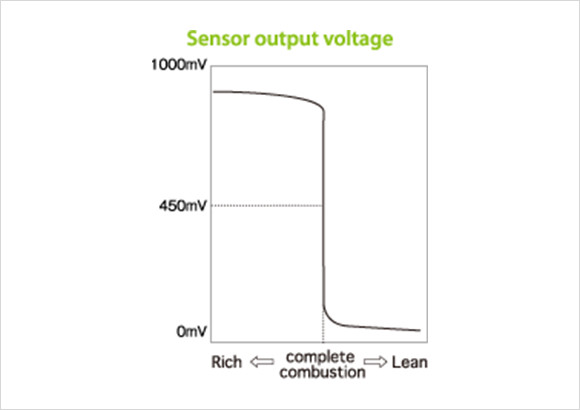
Component & Function
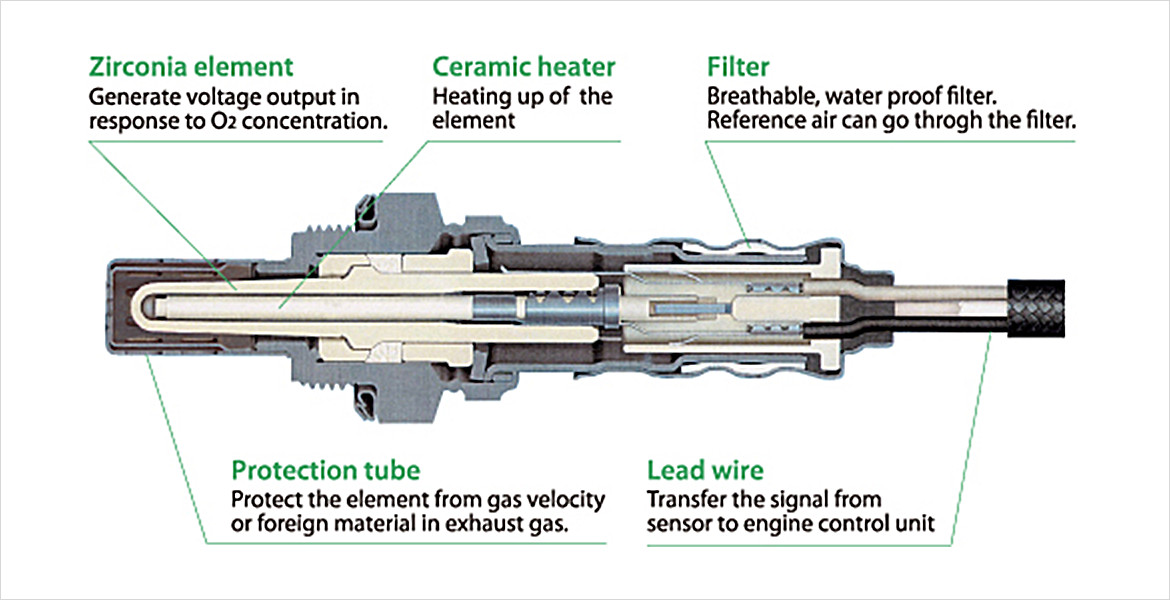
-
Zirconia element
Generate voltage output in response to O2 concentration.
-
Ceramic heater
Heating up the element
-
Filter
Breathable, water proof filter. Reference air flows in through the filter.
-
Protection tube
Protect the element from gas velocity or foreign material exhaust gas.
-
Lead wire
Transfer the signal from sensor to engine control unit
For Automotive Application
In order to meet strict emissions regulations the catalytic converter (CAT) needs to clean the exhaust gas as effectively as possible. The CAT is most efficient at the stoichiometric air-fuel ratio (the point of complete combustion) as shown in the right figure, therefore controlling engine fueling in a narrow window around this point produces the cleanest exhaust gas.
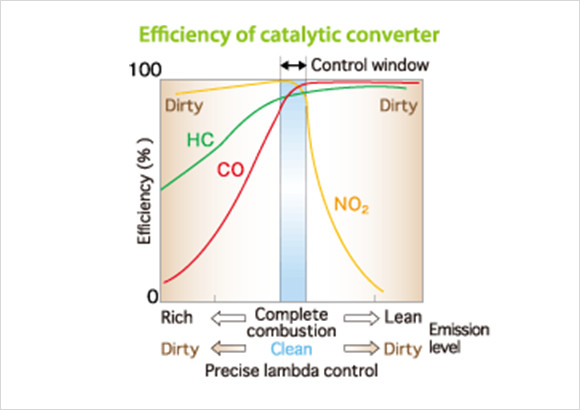
Since the zirconia oxygen sensor outputs 0 to 1 volt, depending on the exhaust O2 concentration, the sensor signal can be used to control fuel injection and ensure nearly stoichiometric combustion, resulting in clean exhaust. Oxygen sensors are also used downstream of the catalytic converter for the purpose of diagnosing its performance and detecting degradation of the CAT. In modern vehicles, one upstream and one downstream sensor is used on each exhaust bank. Thus, a vehicle equipped with a V8 engine would use a total of four oxygen sensors.
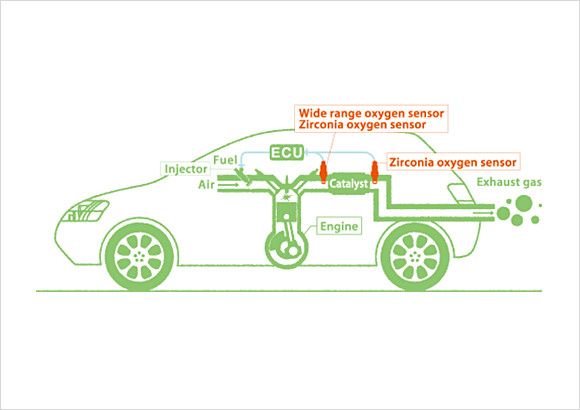
For Motorcycle Application
Emissions regulations for motorcycles are tightening. Demand is increasing for emission systems with air-fuel ratio control and catalytic converters, similar to those used in automotive applications. Non-heated sensors can be used on motorcycles where the sensor is mounted in a high temperature location near the engine, while heated sensors are available for installations where the exhaust gas is cooler.
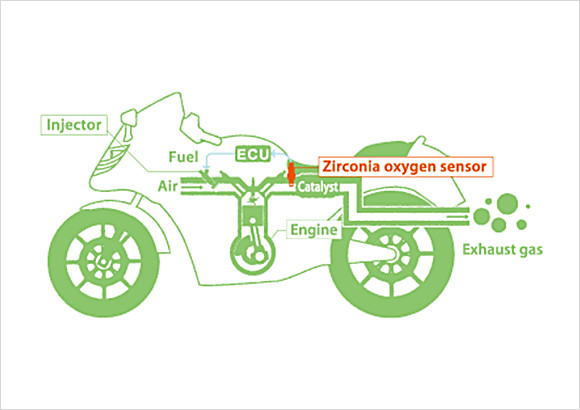
Others
Oxygen sensors are also used for combustion control in non-road applications, such as small engines, lawnmowers, generators, as well as agricultural and industrial applications.
Main Products
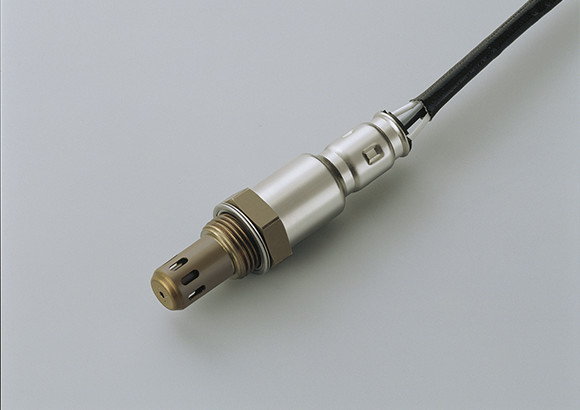
OZAS®-S2
Application
As a central component of emissions treatment systems, oxygen sensors are the most commonly used method of air-fuel ratio control. They deliver high performance and reliability to meet strict emissions regulations.
Features
- Better heat resistance than previous design, allowing use in severe high temperature environments
- Dramatic improvement in poisoning resistance for long life
- Quick activation (8sec)
- Suitable for use downstream of catalytic converter
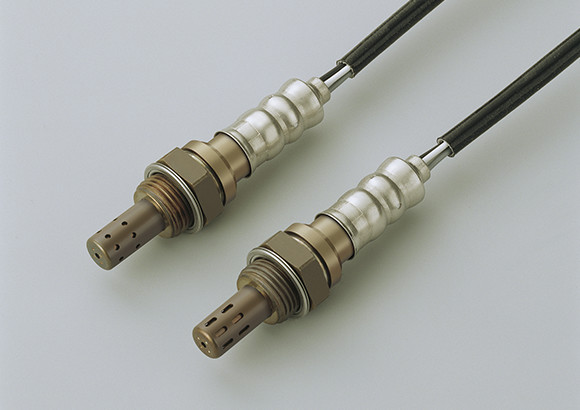
OZAS®-S1
Application
Previous zirconia oxygen sensor's design
Features
- This sensor has the most commonly used in the market among NTK sensors. And it has been widely used in not only advanced country with tighter emission regulation, but also all over the world.
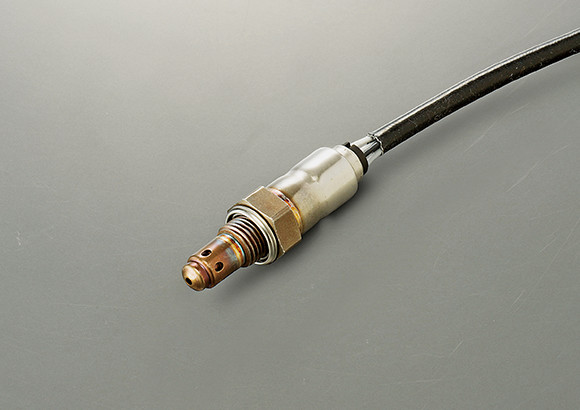
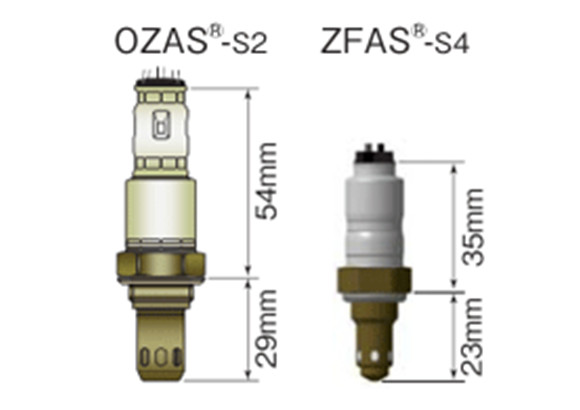
ZFAS®-S4(Small heated type)
Application
Small and lightweight heated oxygen sensor for applications, such as motorcycles with limited space for installation. The sensor body design is dramatically smaller than a conventional oxygen sensors such as OZAS®-S2. A planar element is incorporated for fast activation.
Features
- Laminated planar element design for small size and light weight
- Construction resistant to severe vibration, optimized for high RPM motorcycle applications
- Monolithic element and heater for low power consumption and fast activation, critical for meeting future emissions regulations.
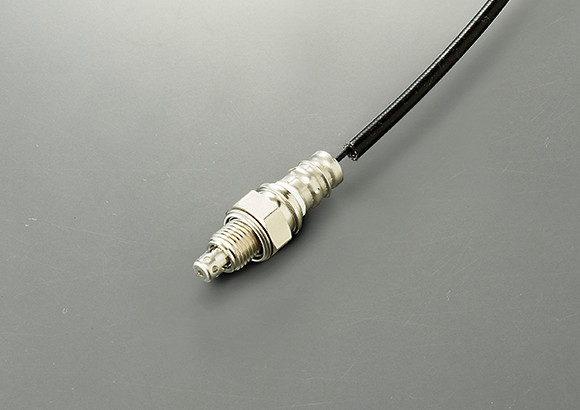
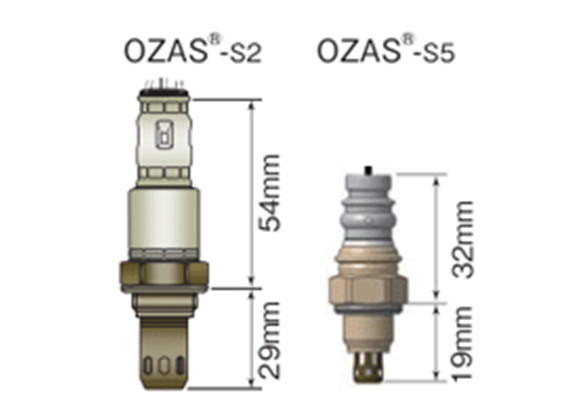
OZAS®-S5(Small non-heated type)
Application
Small unheated oxygen sensor which uses heat from the exhaust gas and does not require any electrical power. Its use is expanding in motorcycle applications with high temperature exhaust. The small sensor body allows flexibility for installation.
Features
- Unheated design uses heat from the exhaust gas, thus eliminating electrical power consumption by the heater.
- Small, light, high resistance to vibration